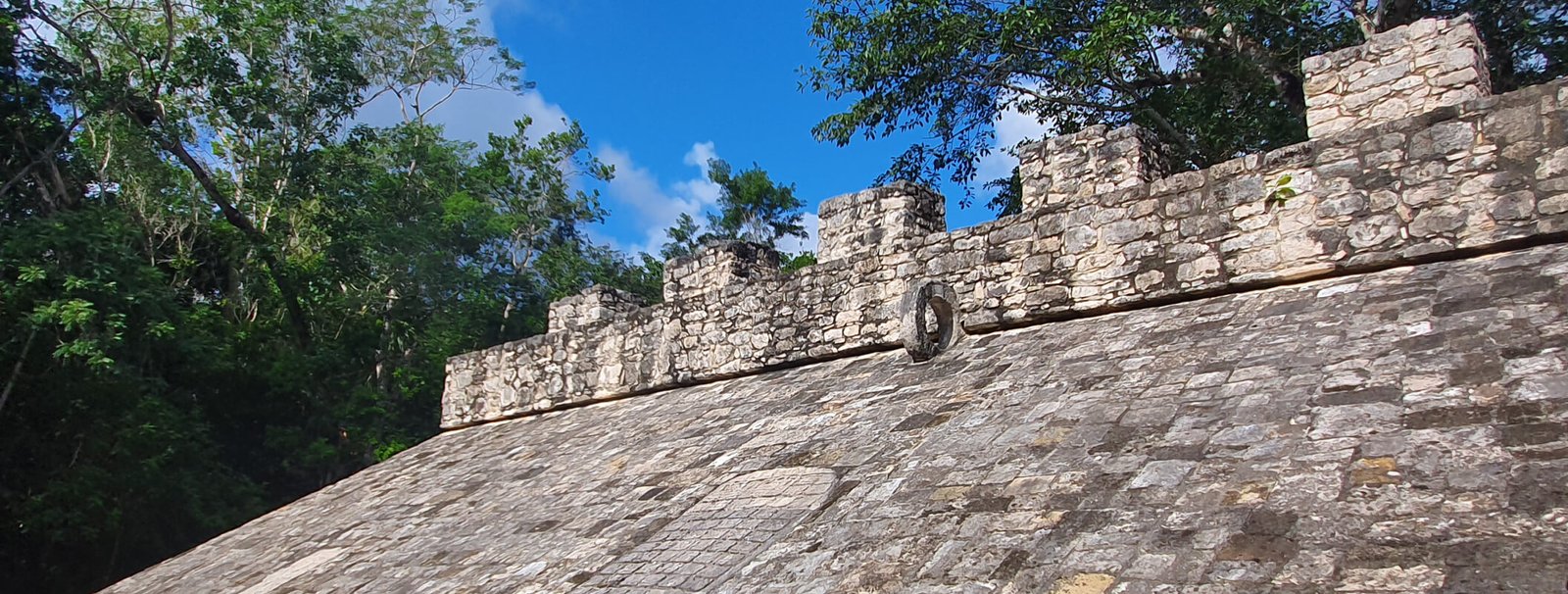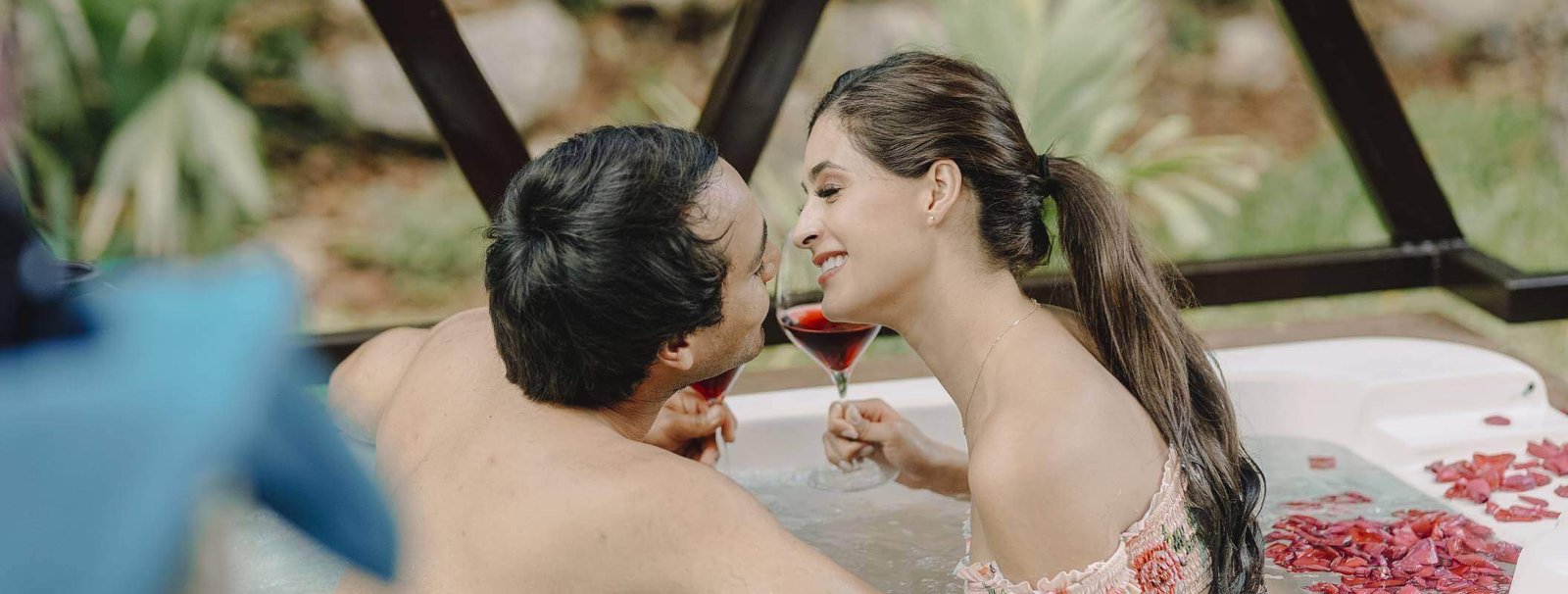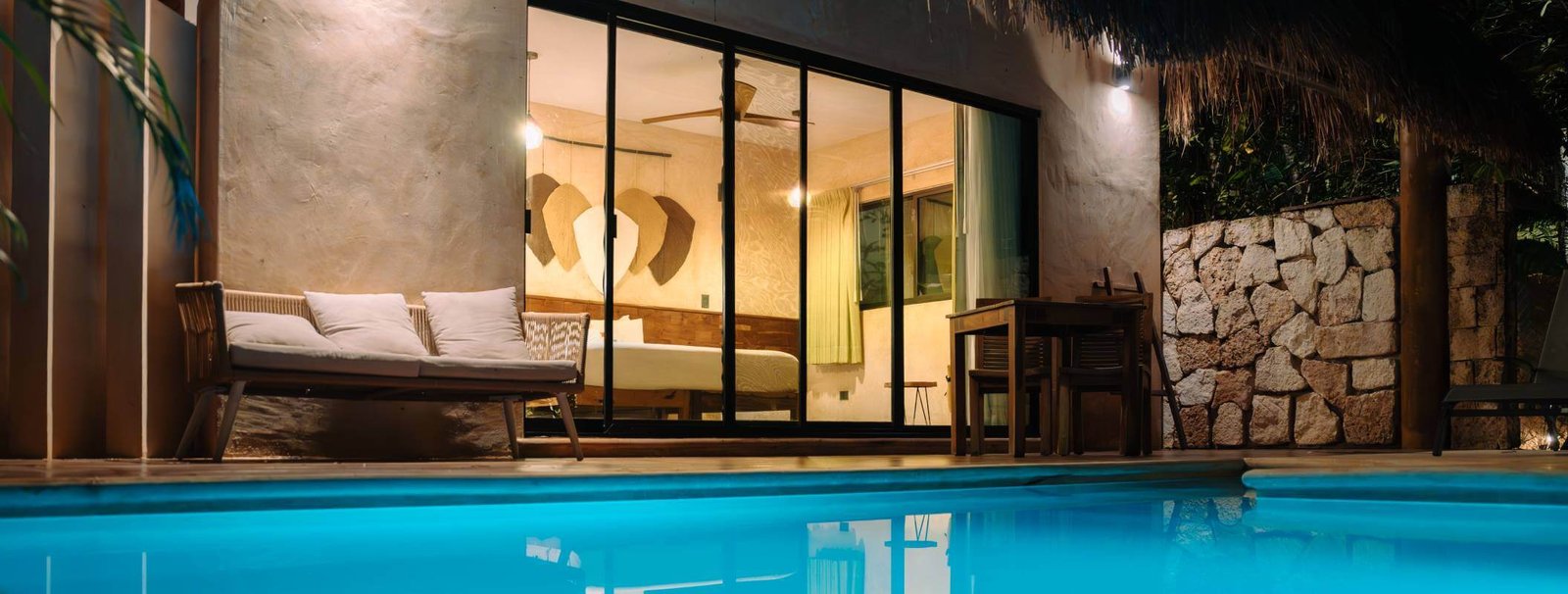Filled with history, culture, and mysteries waiting to be uncovered, Cobá has become a destination that attracts both Maya culture enthusiasts and adventurers alike. However, there are lesser-known details that further enrich the experience of visiting this site. That’s why, in this blog, we’re sharing 8 curiosities about the Cobá archaeological zone that will make your visit even more interesting.
Curious facts about the ruins of Cobá
1. The meaning of Cobá in maya
According to the INAH, Cobá has hieroglyphic inscriptions on stelae and panels confirming that this was its original name. In the Maya language, “Cobá” translates to “turbid water” or “choppy water,” a direct reference to the five lakes that surround the archaeological site.
This connection to water not only defines the name of the place but also played a crucial role in the city’s growth, as the availability of water resources made it a key population center.
2. One of the largest maya cities
At its peak, Cobá was one of the largest and most powerful cities in the Maya World, covering an area of approximately 70 km². In fact, during its most prosperous time, it is believed to have housed between 50,000 and 100,000 inhabitants.
But that’s not all—this vast urban complex includes dozens of structures still covered by the dense jungle that surrounds the site, adding an air of mystery and adventure to the exploration of its ruins.
3. The tallest pyramid in the Yucatán Peninsula
One of the main curiosities of the Cobá archaeological zone is the famous Nohoch Mul pyramid. Standing at 42 meters tall with 120 steps, it is the tallest pyramid in the Yucatán Peninsula.
Although it was previously possible to climb to the top to enjoy breathtaking views of the surrounding jungle, access is now restricted to preserve the structure. Nevertheless, the pyramid remains a prominent attraction and an impressive testament to Maya engineering, making it a must-see detail when visiting the site.
4. Its extensive network of Sacbé roads and connection to other sites
Cobá boasts an extensive network of 50 roads covered with white limestone, known as sacbés (white roads in Maya). These ancient roads connected different parts of the city and linked it to other nearby Maya cities, such as Chichén Itzá.
Among the curiosities of the Cobá archaeological zone, the longest sacbé stands out, spanning 100 km, making it one of the largest known to date in the Maya world.
5. A site in constant discovery
Although Cobá has been explored for decades, many structures remain unexcavated. Archaeologists continue to work in the area, and each year new discoveries are made that expand our knowledge of life in this ancient city. This means that every time you visit Cobá, you might witness a site in evolution, where the past continues to reveal its secrets.
6. Its connection to the end of the world
Among the many curiosities of the Cobá archaeological zone is the famous Stela 20, also known as the “End of the World Stela.” It is known for its inscriptions that, according to some interpretations, indicated that the calendar would end on December 21, 2012.
This detail fueled many theories about the “end of the world,” but in reality, the end of the Maya calendar did not signify a global catastrophe. Instead, for the Maya world, it marked the end of a cycle and the beginning of a new one, something common in their worldview.
7. The only site you can explore on wheels
The Cobá archaeological zone is surrounded by lush jungle, adding a touch of wild nature to the experience. But what makes Cobá even more special is that you can explore the site by bicycle or tricycle, a very popular option among visitors.
These modes of transport allow you to comfortably and enjoyably cover the vast expanse of the site while enjoying the natural surroundings and listening to the birds sing.
8. Cobá: A unique experience away from the crowds
Unlike other more touristy archaeological sites like Chichén Itzá or Tulum, Cobá still retains a sense of tranquility and exploration. Being more isolated and surrounded by jungle, it allows visitors to immerse themselves in history in a more intimate and authentic way.
This aspect makes Cobá a special place for those who want to discover the ancient Maya civilization in a more relaxed environment!
You Might Also Be Interested In:
Where to stay during your visit to Cobá?
Exploring the Cobá Archaeological Zone is an unforgettable experience, and to make the most of your visit, it’s important to choose the right place to stay.
Aldea Cobá is the ideal option for those who want to be close to the wonders of Cobá. Located just 5 minutes from the ruins, our boutique hotel offers a comfortable and convenient stay, allowing you to explore the archaeological site without rushing and easily return to relax in a cozy atmosphere. Plus, we’re just 10 minutes away from some of the most impressive cenotes in the region.
Our villas and bungalows are designed to provide everything you need for a pleasant stay. We offer comfortable rooms, a peaceful atmosphere, and friendly service, all in an environment that respects the natural beauty of the region!
For more information, to book your stay, and to plan your tours, you can contact our direct line at 998 324 0198 or visit our website. Don’t wait any longer and enjoy the magic of Cobá!







